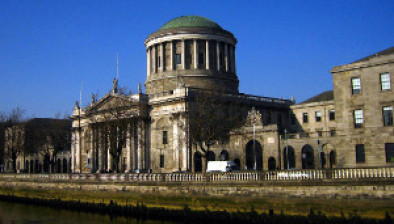NI High Court: No liability for farmer who removed trees causing neighbour’s land to flood

Northern Ireland’s High Court has found that a farmer whose removal of trees may have resulted in increased water seeping into his neighbour’s land is not liable for the damage caused.

About this case:
- Citation:[2022] NICh 16
- Judgment:
- Court:NI High Court
- Judge:Madam Justice McBride
The court found the change in use of the land was “entirely reasonable”, and an occupier is not liable for the natural flow of water from higher to lower ground.
Background
The plaintiff and defendant are neighbours. The defendant owns a field which adjoins the plaintiff’s dwelling house and garden. The plaintiff alleged that the defendant’s negligence and/or nuisance caused excessive water to seep from his field into the plaintiff’s property causing damage to the garden, trees and hedge.
Prior to 2009, part of the defendant’s field consisted of an orchard. The orchard was removed by his predecessor in title as he wished to develop the lands for housing. Due to economic conditions he failed to develop the lands and the field was then sold to the defendant in 2013.
There was a hedge which separated the orchard from the rest of the field. In 2013 the defendant removed the hedge and created a single field. The plaintiff’s land is essentially located at the bottom of a hill and lies below the defendant’s land.
The plaintiff’s case
The plaintiff pleaded both nuisance and negligence. He argued that the removal of the orchard and the disturbance of the prior drainage system by the defendant caused excessive water to seep into the plaintiff’s land, thereby causing damage to his property.
He alleged that his garden was now a “carpet of moss” and required remediation. He further alleged that the operation of his septic tank has been adversely affected. The plaintiff sought injunctive relief to stop the ingress of excessive water and claimed damages for loss and damage sustained.
The defendant denied that he had adversely interfered with the existing drainage system, and gave evidence that he had put in a new and efficient drainage system. He further denied that he owed any duty either in negligence or nuisance.
The defendant claimed that this was merely the natural flow of the water, and any excess water on the plaintiff’s property was due to its location at the bottom of the hill and because of the increase in the amount of annual rainfall.
The plaintiff did not give evidence for reasons of ill-health, although it was accepted that he had been seen out driving one week prior to the hearing.
Consideration
In relation to the septic tank issue, the court was satisfied that the defendant was responsible for this obstruction due to heavy vegetation growth, the removal of which could easily have been done without much expense on the defendant’s part.
Accordingly, the court found that the defendant breached the duty he owed. In terms of damages, the court ordered that the defendant pay the cost to apply for, and connect, the septic tank to the mains.
The court then considered whether the land had become waterlogged and, if so, how. A number of witnesses for the plaintiff gave evidence that the land was previously dry and only became waterlogged after the orchard was removed.
However, relying on expert testimony, the court found that the garden was not waterlogged, although it was damper now that it had been before.
Further, video evidence showed the gullies on the land overflowing with water, onto the road. The defendant submitted that in law he was not liable for the natural flow of water from higher to lower ground.
Having seen these videos, the court was satisfied that the drainage system for the field was not adequate, and as a consequence excess water now travelled from the defendant’s land on to the plaintiff’s land.
Cause of the excess water
The key issue for the court was whether the excess water came about because the defendant put in a less efficient drainage system, or due to the fact that the orchard had been removed and there had been an increase in annual rainfall.
The court noted that the issue could not be in relation to the soil type, or the location of the plaintiff’s land, as there had been no issue with drainage in the past.
The court was satisfied that the new drainage systems were similar to the previously existing drainage systems. Therefore, the evidence indicated that the cause of the excess water was due to the removal of the orchard and also an increase in rainfall.
The final question for the court was whether the removal of the orchard to use the land for agricultural purposes was reasonable, and whether the defendant was liable for any damages caused by this change in use.
The court found that it was “entirely reasonable” to change the use of the land in this way. The judge argued that there should be ‘give and take’ between neighbouring occupiers of land. Using the lands for pasture is a common and ordinary use of the lands and, on this basis, the court found that no liability arose from the change in use of the field.
The court agreed that an occupier of land is not liable for the natural flow of water from higher to lower ground. The increase in the flow in the present case was found to have arisen as a result of an increase in rainfall, therefore no liability attached.
Conclusion
Ultimately, the court did not consider any liability attached to the defendant in respect of the increase in water flowing onto the plaintiff’s land.
It was not necessary for the court to consider whether damage was caused to the plaintiff’s property as a result of the excess water, as no liability attached to the defendant.
The only damages awarded were those in respect of the costs of applying for, and connecting to, the mains.











